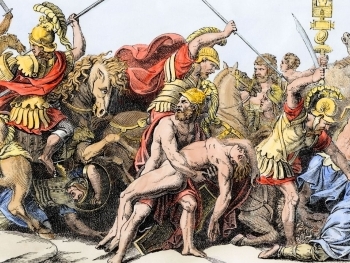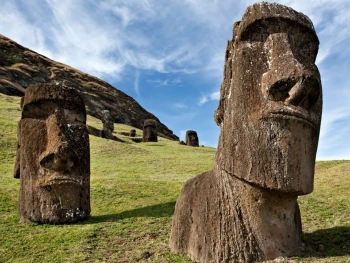
The Persian Empire looms large in the latter chapters of the Hebrew Bible, not only as a dominant world power but as an unexpected instrument of divine will. While ancient empires like Egypt, Assyria, and Babylon are often depicted as oppressors of Israel, the kings of Persia occupy a more nuanced—and at times even favorable—position in the biblical narrative. Through a closer examination of these kings from both historical and theological perspectives, we gain insight into how the Bible presents foreign rulers as part of God's unfolding plan.
1. Cyrus the Great: The Anointed Liberator
Historical Context
Cyrus II, founder of the Achaemenid Empire, conquered Babylon in 539 BCE and inaugurated a new era of imperial governance. Unlike the Babylonians, who had exiled and suppressed subject peoples, Cyrus adopted a policy of religious tolerance and local autonomy.
The Cyrus Cylinder, discovered in Babylon and now housed in the British Museum, documents his policy of repatriating displaced peoples and restoring temples—a practice that matches the biblical account of the Jews' return to Jerusalem.
Biblical Portrayal
Cyrus is the only non-Israelite in the Bible to be explicitly called “God’s anointed” (Hebrew: mashiach):
"Thus says the Lord to His anointed, to Cyrus, whose right hand I have grasped..."
— Isaiah 45:1
In Ezra 1, Cyrus issues a decree allowing the Jewish exiles to return and rebuild the Temple in Jerusalem, fulfilling prophecies in Isaiah and Jeremiah. From a theological standpoint, Cyrus is portrayed not just as a benevolent ruler, but as a divinely chosen agent of Israel’s redemption.
2. Darius I: Supporter of Temple Reconstruction
Historical Context
Darius I (reigned 522–486 BCE) consolidated the empire and implemented efficient administrative reforms. He is also remembered for expanding Persian control into parts of Europe and for the construction of Persepolis, the ceremonial capital of Persia.
Biblical Portrayal
In Ezra 6, Darius reaffirms Cyrus’s earlier decree after Jewish leaders appeal for help amid local opposition. He not only endorses the rebuilding of the Temple but also orders imperial support for the project:
“Let the cost be paid from the royal treasury…”
— Ezra 6:4
This further illustrates Persia’s unusual role as a facilitator of Jewish religious restoration, making Darius a key figure in the post-exilic period.
3. Xerxes I (Ahasuerus): The King of Esther’s Court
Historical Context
Xerxes I (reigned 486–465 BCE) is best known for his campaign against Greece, including the famous Battle of Thermopylae. In the Bible, he appears under the name Ahasuerus, the Persian king in the Book of Esther.
Biblical Portrayal
The Book of Esther presents Ahasuerus as a powerful but impulsive monarch, easily swayed by advisers like Haman, whose genocidal plot against the Jews nearly succeeds. Yet the courage of Queen Esther and the wisdom of Mordecai lead to the king reversing his decree, allowing the Jews to defend themselves.
Though Ahasuerus is portrayed as erratic, he ultimately supports the preservation of the Jewish people—again aligning Persian kings with divine outcomes.
4. Artaxerxes I: Patron of Ezra and Nehemiah
Historical Context
Artaxerxes I (reigned 465–424 BCE) continued his predecessors’ policy of local governance and religious autonomy. His reign saw continued contact with the Jewish community in Jerusalem.
Biblical Portrayal
Under Artaxerxes, two critical figures—Ezra, the priest and scribe, and Nehemiah, the royal cupbearer—were sent to Jerusalem:
- Ezra 7 recounts the king’s decree enabling Ezra to teach and enforce the Law of Moses.
- Nehemiah 2 describes the king granting Nehemiah permission to rebuild Jerusalem’s walls and govern the city.
Artaxerxes’s involvement marks a shift from temple reconstruction to rebuilding Jewish society and reaffirming the Torah. His cooperation reinforces the biblical idea that foreign kings can be agents of God’s covenantal purposes.
Theological Themes: God’s Sovereignty Over Nations
The biblical treatment of Persian kings reveals key theological messages:
1. Divine Sovereignty
God is portrayed as sovereign over all nations—even empires. The Persian kings, though Gentiles, are described as fulfilling divine prophecy, often unknowingly. This breaks the mold of God's working solely through Israelite leaders.
2. Exile and Restoration
The Persian period is the setting for a major biblical theme: restoration after judgment. Through Cyrus and his successors, the exiled people of Israel are given a second chance—a fulfillment of God’s promise to bring them back from captivity.
3. Faithfulness in a Foreign Land
Books like Daniel, Esther, Ezra, and Nehemiah portray Jewish individuals living faithfully in a Gentile empire. These stories offer models for perseverance, wisdom, and identity in the diaspora—relevant not only then but now.
The kings of Persia occupy a unique space in the biblical imagination. Far from being enemies of Israel, they are often seen as divinely appointed agents of restoration, justice, and renewal. Their inclusion in the biblical narrative affirms a core theological truth: God’s purposes transcend national boundaries and can be fulfilled through any vessel—even the kings of the world’s greatest empire.
From Cyrus the Great’s decree to Artaxerxes’s support of Nehemiah, these rulers played indispensable roles in shaping the post-exilic Jewish world. Through both history and theology, the Persian kings remind us that divine providence often unfolds through the unexpected hands of history’s most powerful figures.
Bible History Old Testament Old Testament stories Persian Empire Cyrus the Great Jewish exile Darius I Xerxes Artaxerxes Old Testament kings Restoration of Israel Biblical theology

















